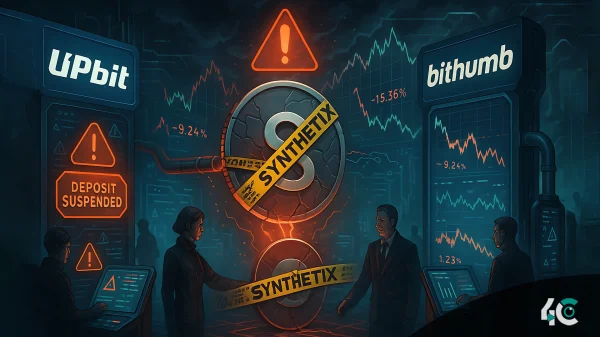Several cryptocurrencies have captured the attention and imagination of many, including Bitcoin, Ether, Dash, Ripple, Monero, NEO, EOS, Litecoin, Zcash, and Cardano. We have hundreds of cryptocurrencies today, with more to come. The use of cryptocurrencies is part of an electronic payment system in which payments are validated by a decentralized network (not a bank) rather than by a centralized intermediary.
The popularity of cryptocurrencies has exploded since 2009, when they were relatively unknown, niche technological curiosities. Several other financial transactions and products have incorporated them. The terms of certain derivatives are now based on cryptocurrencies, for example through initial coin offerings (ICOs). Cryptocurrencies and other digital currencies may be issued by some government central banks.
Economics of Cryptocurrencies
Payments in the modern economy are largely digital. e-commerce, for example, requires the use of digital tokens. The means of payment in the digital currency system is a string of bits. These strings of bits are prone to being copied and repurposed like any other digital record. A digital token can be counterfeited by spending it twice, which is called the double-spending problem. In the past, this problem has been solved by hiring a trusted third party to manage a centralized ledger and transfer balances by crediting and debiting buyers’ and sellers’ accounts. One prominent example is PayPal; the value of the currency derives from the fact that users trust the third party to prevent double-spending.
A cryptocurrency such as Bitcoin removes the need for a trusted third party. Instead, it uses a network of (possibly anonymous) validators who keep a record of transactions. In order to maintain ownership, these validators must maintain consensus about the correct record of transactions. Nevertheless, such a consensus requires that users avoid double spending and trust the validators to update the ledger accurately.
Cryptocurrencies such as Bitcoin tackle these challenges in what ways? Blockchain technology ensures the distributed verification, updating, and storage of the history of transactions. A block is a collection of transactions conducted between users of a crypto currency. From these blocks, one can create a chain showing past transaction history, which can be used to verify a user’s balances or currency. As a result, a blockchain is like a book that contains all the past transactions, with each block recording the latest transaction.
This competition can take various forms. In Bitcoin, it occurs via a process called mining. A block validator (a miner) competes to solve a computationally costly problem known as proof-of-work. Mining winners are entitled to add new blocks to the chain. Mining is not possible without a reward structure since transactions validation and mining are costly. Currently, the creation of new coins and transaction fees are used to fund such rewards in Bitcoin, for example.
Sadly, a blockchain is not designed to prevent a forward-looking double-spending attack on a cryptocurrency.
The Future
Some of the current limitations of cryptocurrency may be overcome by technology in the future. A crash of a computer can wipe out a person’s entire digital fortune, or a hacker can steal data from a virtual vault. As cryptocurrency rises in popularity, scrutiny and regulation will increase, which undermines the purpose of cryptocurrency.
There have been steady increases in the number of merchants who accept digital currencies, but they are still in the minority. To gain widespread acceptance among consumers, cryptocurrencies must first become widely accepted. Most people, except for the technologically adept, will likely be deterred by their relative complexity compared with conventional currencies.
If a cryptocurrency aspires to be included in the mainstream financial system, its requirements may be very diverse. This system would have to be mathematically complex (to prevent fraud and hacker attacks) and easy for consumers to understand; decentralized, but with adequate consumer safeguards and protection; and preserve user anonymity without serving as a conduit for tax evasion, money laundering, or other illegal activities. With so many requirements to fulfill, is it possible that in a few years, the most popular cryptocurrency will have characteristics that fall somewhere between heavily-regulated fiat currencies and today’s cryptocurrencies? There is little doubt that Bitcoin’s ability (or lack thereof) to confront the challenges it faces may determine the fortunes of other cryptocurrencies in the years ahead.
The Electronic Exchange of Money
Despite widespread use of electronic payments today, electronic payments can present some difficulties due to insufficient scarcity (a digital file can be copied many times over, retaining the exact information as its predecessor) and a lack of trust between parties. There is a problem with electronic transfers of money called the double-spending problem. Payers may wish to send digital files directly to payees in the hope the files will act as a conduit for the payment. However, if the payee cannot verify that the payer sent the same file to more than one payee, the transfer becomes problematic. A system in which money can be spent twice (or any number of times) would not preserve its value.
Traditionally, if you want to transfer money electronically, you must involve a centralized, trusted intermediary, such as a bank, central bank, or other financial institution. Trusted intermediaries record the amount of money each participant holds in a private ledger. In order to make a payment, an electronic message (or messages) is sent to an intermediary or to various intermediaries informing them to modify their books. It also deducts the appropriate amount from the payer’s account, and adds that amount to the payee’s account after validating the transaction.
Alternatives to this traditional electronic payment system include cryptocurrency such as Bitcoin, Ether, and Litecoin.
Cryptocurrency: A New Money?
As noted above, Unlike a third-party intermediary, a network of computers acts as the central authority in electronic payment systems in which cryptocurrency acts as money.
Public ledgers are used in general to facilitate these electronic payment systems and allow owners to create accounts with pseudonymous names that are known to everyone or addresses that correspond to public keys and passwords or private keys that are paired with the public keys and exposed only to administrators. Two parties agree to transfer cryptocurrency from one account to another (perhaps in payment of a good or service). Using their private key, the buyer unlocks the cryptocurrency they will use as payment, so that the seller can lock it.
Blockchain technology is frequently used in cryptocurrency platforms to validate changes to the ledgers. Using cryptographic protocols, blockchain technology prevents unauthorized changes or manipulations of the public ledger. In specific, before any transaction can be entered into the ledger and the ledger is irreversibly changed, a network member must validate the transaction.
Digital signatures authenticate each transaction between the two parties involved and ensure that even a change in the ledger is visible to all parties. A digital currency can be exchanged among parties who otherwise do not know each other, but who trust the platform and its cryptographic protocols to prevent double-spending and invalid changes to the ledger.
Blockchain technology and cryptocurrency ledgers are mathematically secure, so it would be very difficult, if not impossible, to manipulate them. Hackers have exploited vulnerabilities in certain exchanges and individuals’ devices to steal cryptocurrency.
Potential Challenges to Widespread Adoption
What type of policy to adopt for cryptocurrencies may depend on how common these currencies become. Cryptocurrencies must be used as money in some capacity to deliver the benefits mentioned above. Cryptocurrencies would be of little use as money if they weren’t accepted by individuals and businesses. Because of this, currencies are subject to network effects, in which their value and use depend in part on how many people will use them. Some of the challenges to widespread adoption of cryptocurrencies are discussed below.
Challenges to Effectively Performing the Functions of Money
The success of cryptocurrency as money depends on how well it serves as a medium of exchange, a unit of account, and a store of value. In the United States and elsewhere, cryptocurrency’s characteristics make it unsuited for these functions. Bitcoin is currently used or accepted by a relatively small number of businesses and individuals. Several reasons may explain why cryptocurrency is used less often than traditional money. Creditors are not required to accept cryptocurrencies to settle debts, unlike the dollar and most other government-backed currencies. Businesses and consumers may also feel hesitant about trusting a decentralized computer network of pseudonymous users. As a result, consumers and businesses may be satisfied with the existing payment systems.
Technological Challenges: Scaling, Transaction Validation Speed,
and Energy Consumption
There is uncertainty as to whether cryptocurrency systems are scalable, meaning their capacity can be increased cost-effectively without losing functionality. To date, the technologies and systems underlying cryptocurrencies appear incapable of handling the number of transactions that a widely adopted, global payment system would require. In fact, it is common practice for such transactions to be completed through established payment systems. Furthermore, Bitcoin’s processing speed remains slower than many electronic payment methods, such as credit and debit cards, which offer near-instant transactions. The Bitcoin ledger publishes a block of transactions every 10 minutes, but because a limited number of transactions can be added to a block, each transaction may take longer than an hour to appear.
The computers involved in cryptocurrency mining consume a considerable amount of energy to run and cool. According to some estimates, the Bitcoin network uses roughly the same amount of energy as a small country like Ireland. The high energy consumption of cryptocurrencies also raises questions about whether they will ultimately be more efficient than current payment systems. Additionally, the price of a market transaction, like purchasing electricity, may not fully reflect all societal costs, like pollution.
Until cryptocurrencies become widely accepted as payment systems and displace existing traditional intermediaries, new procedures and intermediaries such as those described in this section may need to establish a sufficient level of trustworthiness and efficiency. It may be questioned whether cryptocurrencies can be used as money if their intermediaries must act as money.
Should You Invest in Cryptocurrencies?
Consider your “investment” in cryptocurrencies as you would any other highly speculative venture. You run the risk of losing most, if not all, of your investment. Cryptocurrencies have no intrinsic value other than what a buyer is willing to pay for them at any given time. It is therefore very susceptible to huge price swings, increasing the risk of investors losing money. For example, Bitcoin plunged from $59,300 to $30,000 in just 10 days on May 19, 2021.
Consider investing in something else that is more suited to you if you cannot handle that kind of volatility. Bitcoin is still deeply divided within the investment community. Supporters see its limited supply and increasing usage as value drivers, while detractors see it as just another speculative bubble. This is a debate that conservative investors should avoid.
Conclusion
There has been much discussion about the future of Bitcoin and other cryptocurrencies since Bitcoin’s emergence. Despite its recent issues, Bitcoin’s success since its launch in 2009 has inspired the creation of alternative cryptocurrencies, including Etherium, Litecoin, and Ripple. In order to join the mainstream financial system, cryptocurrency must meet very diverse criteria. Even though that seems unlikely, the fortunes of other cryptocurrencies in the future may depend on Bitcoin’s ability to deal with its challenges.



































